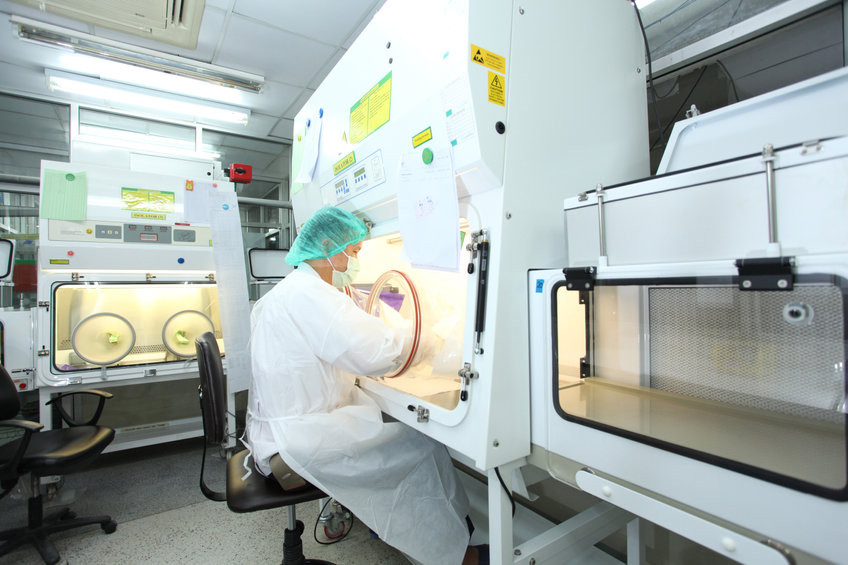By Jessica Pyhtila, PharmD
September 03, 2021
Considerations for Sterile Compounding During COVID-19
The SARS-CoV-19 pandemic has upended the healthcare field for more than a year and a half. Besides an impact on infection control practices and staffing considerations, the pandemic has also significantly disturbed the supply chains for multiple medications and products. This has led to a direct impact on sterile compounding, at a time when the demand for sterile compounded products remains high.
Pre-pandemic, the United States Pharmacopeial Convention (USP) General Chapter <797> Pharmaceutical Compounding – Sterile Preparations represented the only official guidance on sterile compounding. However, in light of the pandemic, the USP has attempted to address the disruptions in sterile compounding, releasing a series of regularly updated guidances on the topic since 2020. The USP is quick to note that their recommendations do not rise to the level of a compendial standard. Rather, the recommendations represent expert opinion on how to minimize the risk of microbial infection during the sterile compounding process.
Importantly for healthcare facilities, the Joint Commission has weighed in on the USP’s guidance, stating that facilities who use them in lieu of the traditional USP <797> guidelines may do so and remain in compliance with Joint Commission standards. This Joint Commission compliance grace period will remain in place until the organization declares that the state of emergency has been lifted.
Consideration of Beyond-Use Date Assignment in Low or Medium-Risk Compounded Sterile Preparations
The USP recommends the conservative assignment of Beyond-Use Dates (BUDs) in sterile compounding, taking into consideration the agent’s chemical stability, physical stability, and microbial considerations. The USP allows for the use of the following BUDs if personal protective equipment is reused according to USP standards, and compounding is otherwise compliant to USP <797>.
Low or medium-risk compounded sterile preparations which are prepared in a segregated compounding area may have BUDs of 12 hours at a controlled room temperature or 24 hours in a refrigerator. If they are instead prepared in a cleanroom suite, they may have BUDs of 4 days at a controlled room temperature or either 10 days in a refrigerator (medium-risk) or 14 days (low-risk). Alternatively, they may be stored for up to 45 days at −10° C or colder.
Single-dose containers that are punctured in air that is ISO Class 5 or cleaner may be used for up to 12 hours after the initial puncture. In contrast, single-dose ampules must not be stored, regardless of timeframe.
To minimize risk, the USP recommends continuing staff monitoring, such as gloved fingertip and thumb sampling every 6 months. In addition, they recommend that facilities increase the frequency of surface sampling.
It is important to remember that this guidance refers only to sterile compounding. If compounding is taking place with non-sterile items, the requirements for high-risk compounding should be followed.
Personal Protective Equipment (PPE) Considerations
As a result of the demand for adequate PPE falling short due to supply-chain disruptions during the pandemic, the USP supports enforcing PPE requirements based on risk, even if they are not fully compliant with USP <797>. The USP notes that reusing, or skipping, garb may increase the risk of microbial contamination. To mitigate this risk, the USP recommends leaving engineering controls in effect. Further, noting that compounders are under the purview of individual state boards, USP recommends facilities double-check with relevant regulatory bodies to determine if compliance waivers or interim requirements apply at the state or local level.
USP recommends that facilities should inventory and develop an action plan for PPE allotment, documenting any changes from Standard Operating Procedures. To facilitate this, the Centers for Disease Control and Prevention has designed a PPE burn-rate calculator.
During the pandemic, garb for direct patient care personnel should take priority over other needs, including compounding. However, sterile gloves should remain the highest PPE priority for compounding personnel, due to the risks of direct contact contamination. The staff performing sterile compounding should be limited and scheduled to maximize individual compounding time. Further, staging activities should be arranged to minimize traffic flow through the compounding areas.
Garb shortages may be addressed, in part, by garb reuse. It is important to store garb in a way that minimizes contamination risk of all garb. This includes keeping the garb either in the classified area or within the segregated compounding area. Unfortunately, no data exists to support techniques for garb sterilization such as using hand-held UV lights.
In the event of complete garb shortage, the USP recommends the following:
- Disposable sterile gloves may be used even beyond the manufacturer’s recommended shelf life. If sterile gloves are unavailable, nonsterile gloves may be used, saturated with 70% isopropyl alcohol upon donning and frequently thereafter. Although sterile 70% isopropyl alcohol is preferred, nonsterile is acceptable. Other concentrations or types of alcohol, such as ethanol, should not be used.
- Disposable face masks may be reused as long as they are not visibly soiled. If disposable face masks are not available, washable fabric face masks may be used as long as they are replaced each time the person enters the sterile compounding area or buffer room.
- Disposable gowns may be reused as long as they are neither ripped nor visibly soiled. Ideally, disposable gowns should be replaced every day. In the event that gowns are not available, dedicated non-disposable long-sleeved garments are preferred, such as clean lab coats.
- Disposable hair covers may be replaced by clean fabric that is washed or replaced after each shift.
- Disposable shoe covers may be forgone for clean, dedicated shoes that are used in the compounding area and are regularly cleaned.
Although the pandemic has disrupted multiple facets of sterile compounding, both the Joint Commission and USP are aware and supportive of changes that pharmacies may need to make during the emergency. As the USP guidances are regularly updated, it is important to remain vigilant in regard to any changes. Further, pharmacy management should pay close attention to information from the Joint Commission about how long the interim guidances remain an acceptable alternative.
Stay in the Know
For ongoing updates about USP 797 and others, sign up on their website here. For more relevant healthcare topics specifically written for staff members like you, visit the StaffReady blog.
Have a thought on this topic? Comment on LinkedIn
Follow us on LinkedIn
Follow us on Facebook
References:
United States Pharmacopeial Convention. “Operational Considerations for Sterile Compounding During COVID-19 Pandemic,” August 4, 2021. Retrieved from: https://go.usp.org/l/323321/2020-04-11/345w2l/323321/103995/Operational_Considerations_for_Sterile_Compounding_During_COVID_19_Pandemic.pdf
The Joint Commission. “Medication – Sterile Compounding – Considerations for Sterile Compounding During COVID-19 Pandemic,” July 26, 2021. Retrieved from: https://www.jointcommission.org/standards/standard-faqs/home-care/medication-compounding-mc/000002308/
United States Pharmacopeial Convention. “USP Response to Shortages of Garb and Personal Protective Equipment (PPE) for Low- and Medium-Risk Sterile Compounding During COVID-19 Pandemic,” May 6, 2020. Retrieved from: https://go.usp.org/l/323321/2020-04-30/36chqb/323321/106163/usp_covid19_garb_and_ppe.pdf
